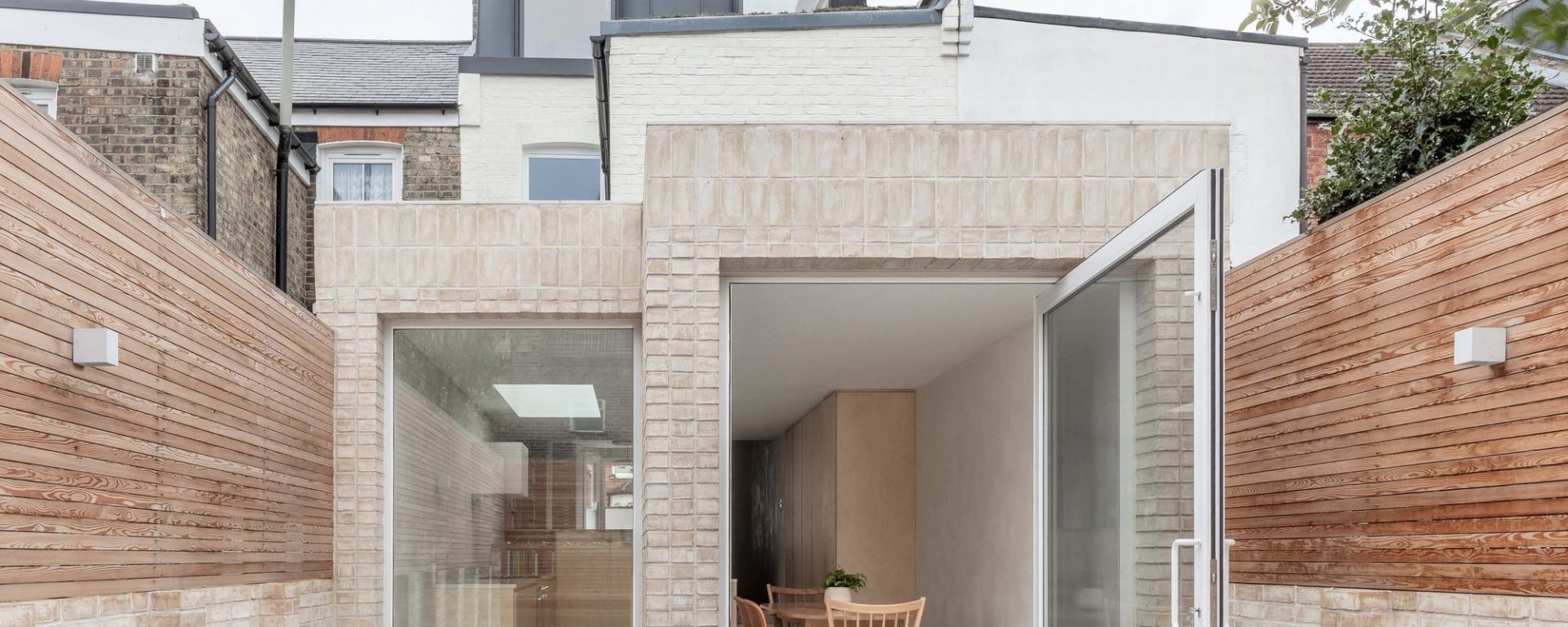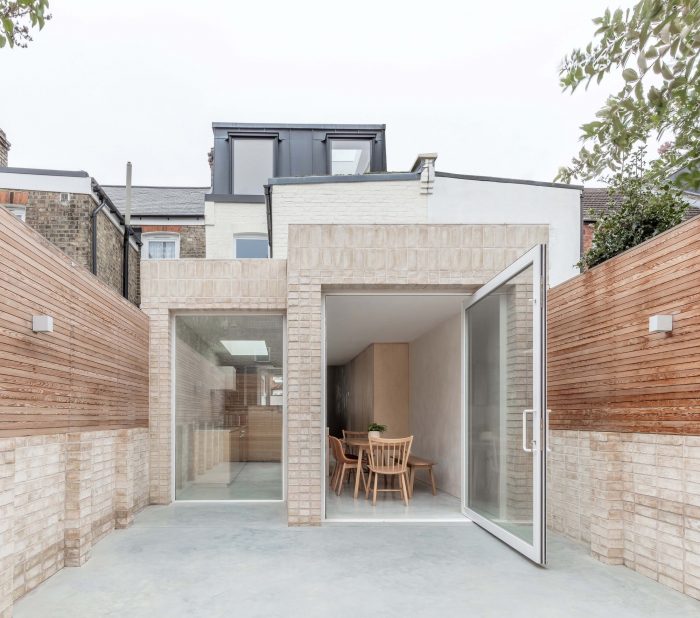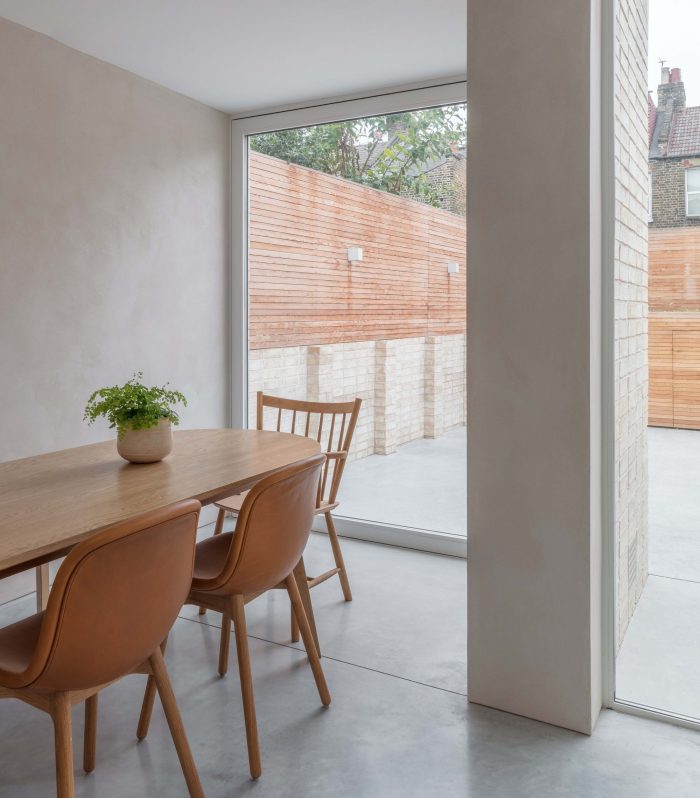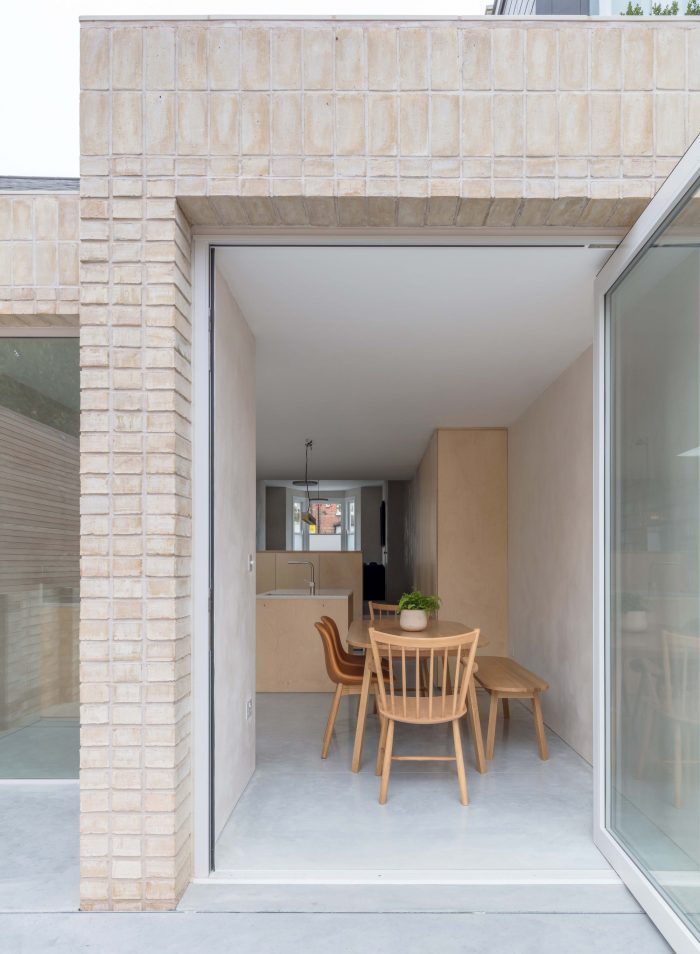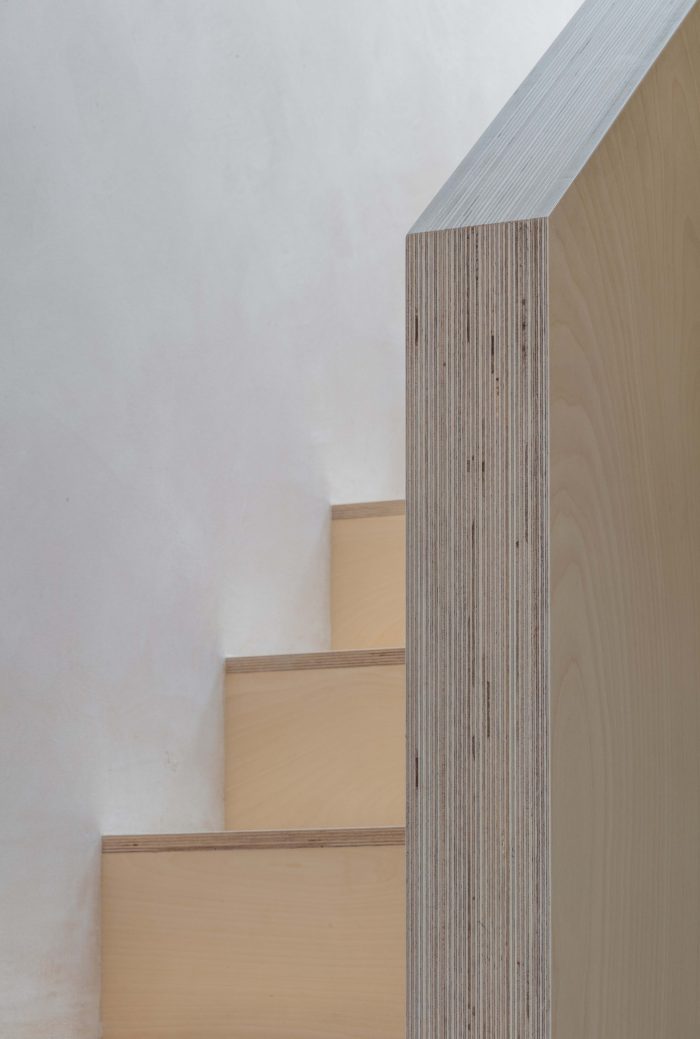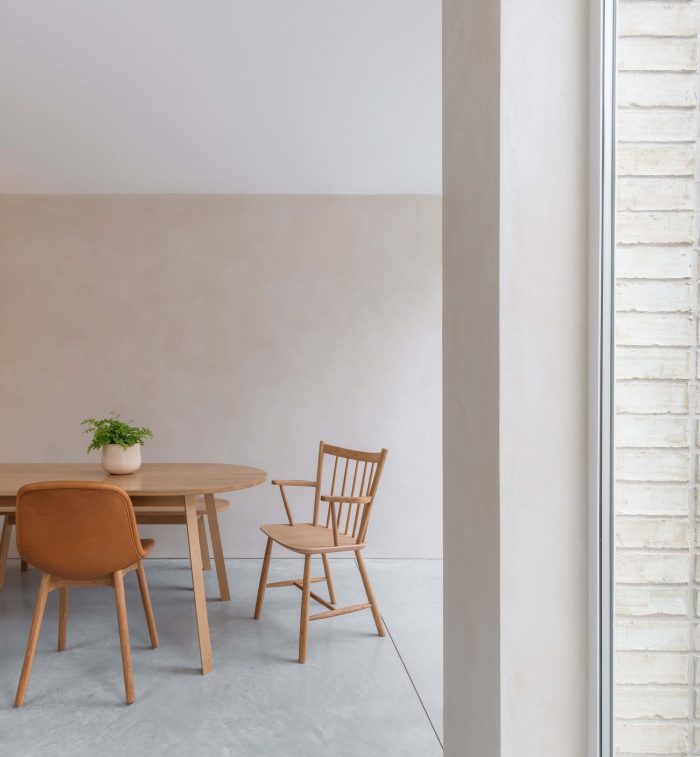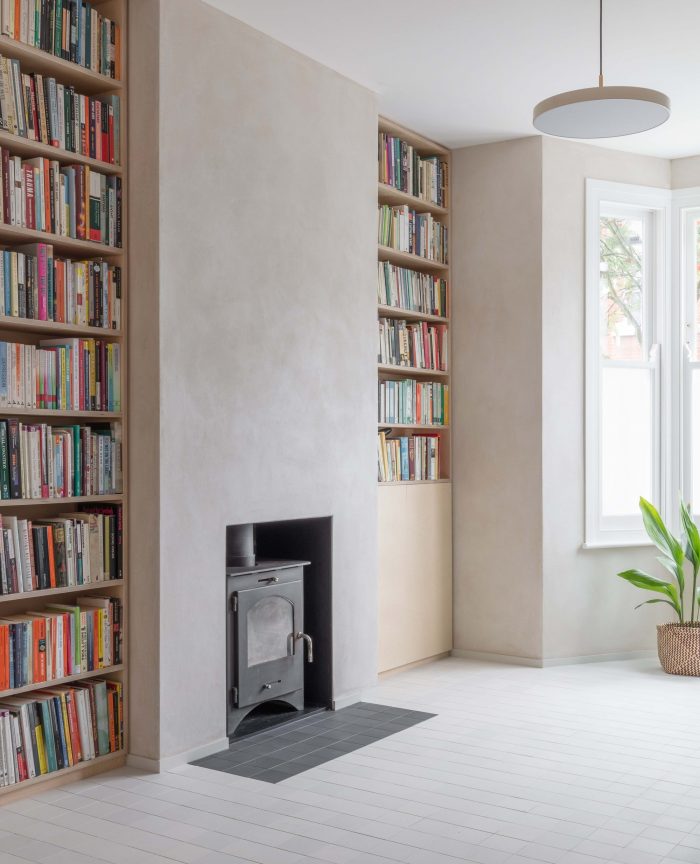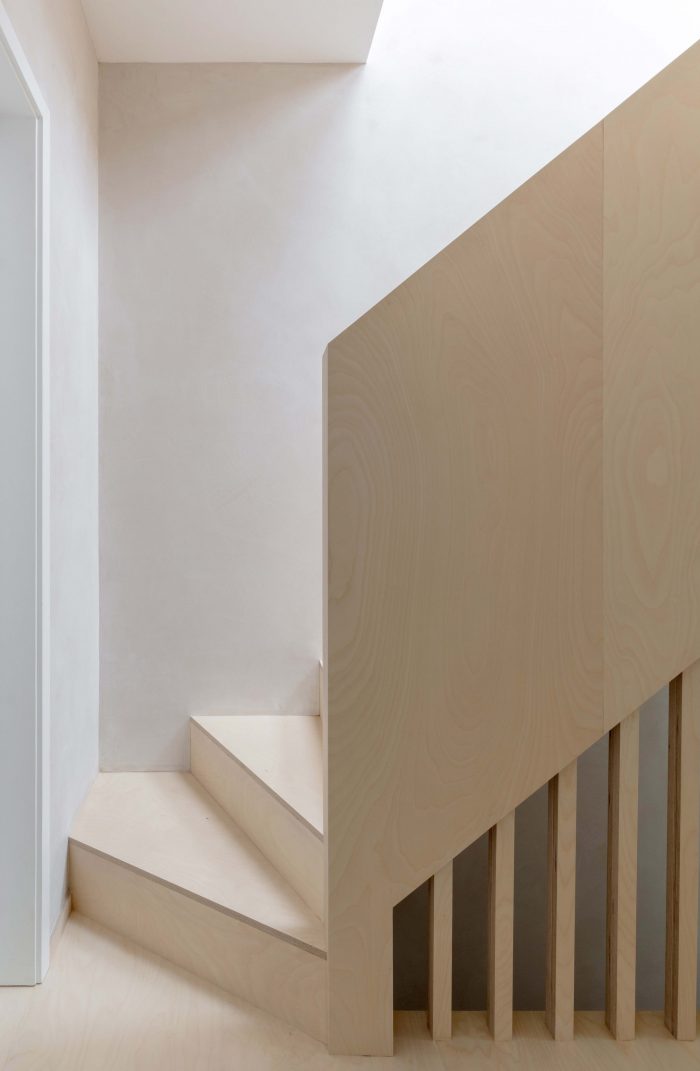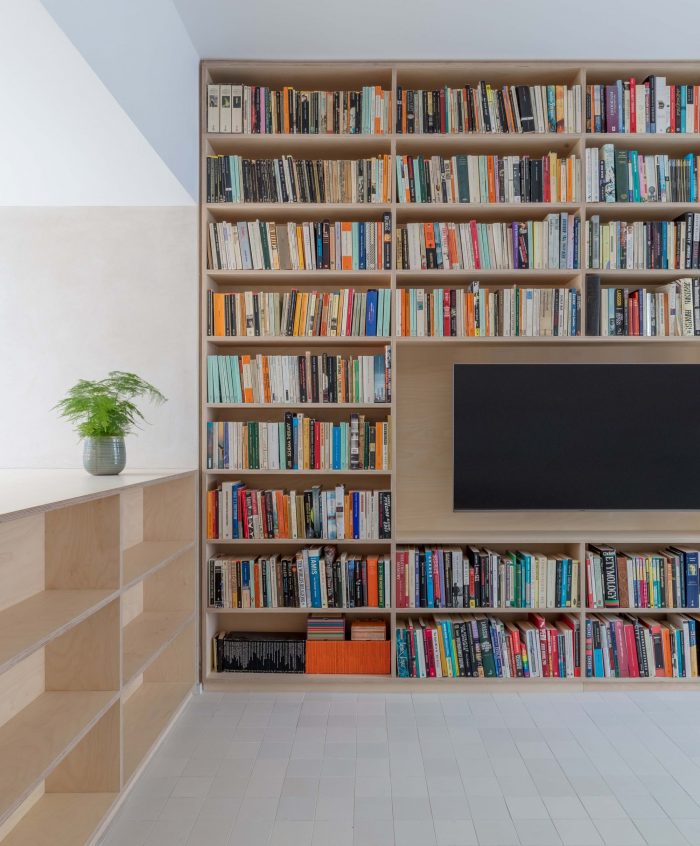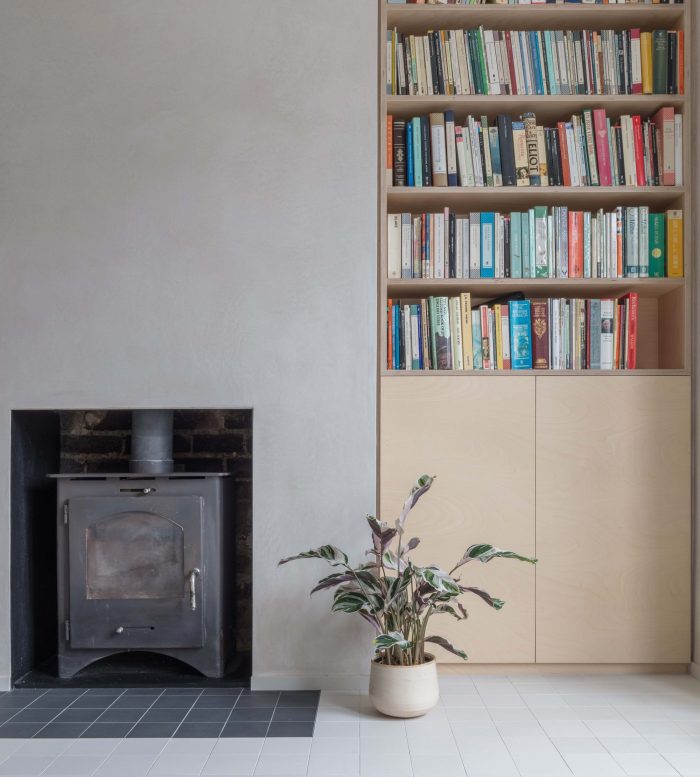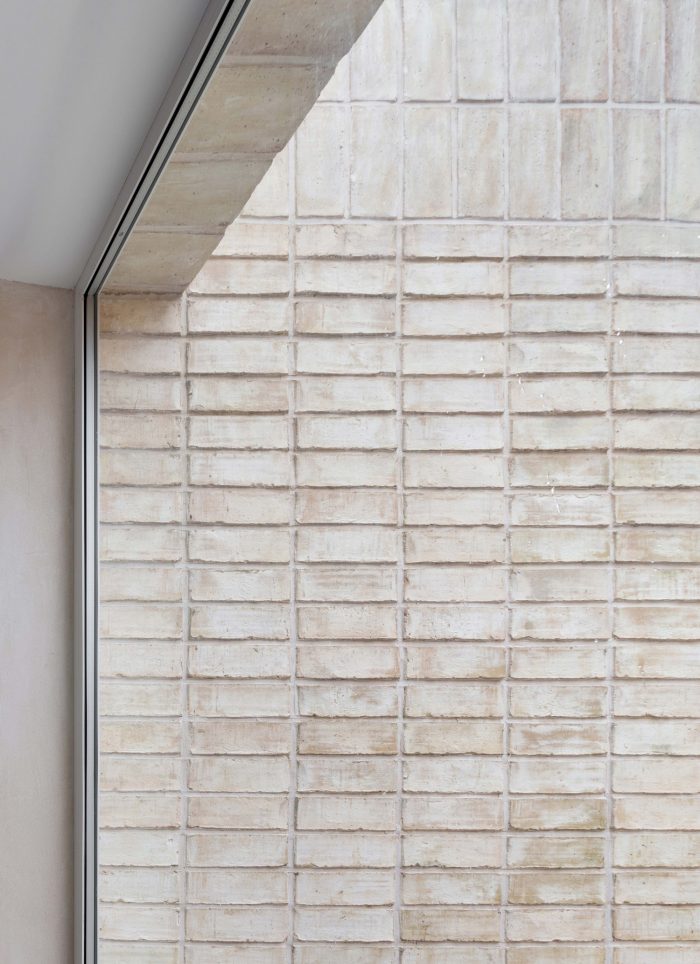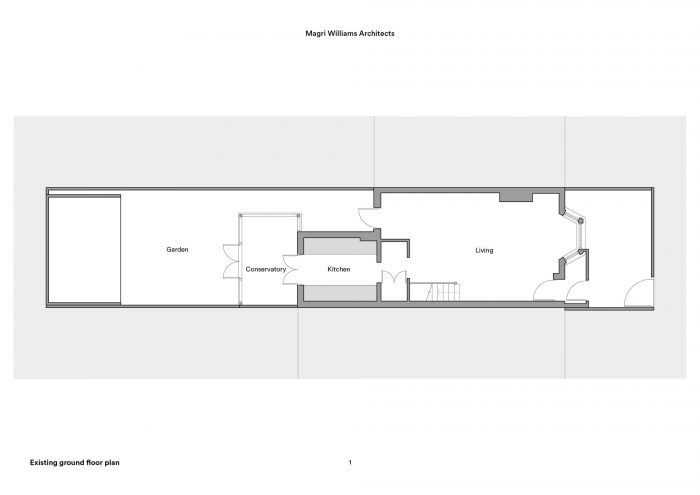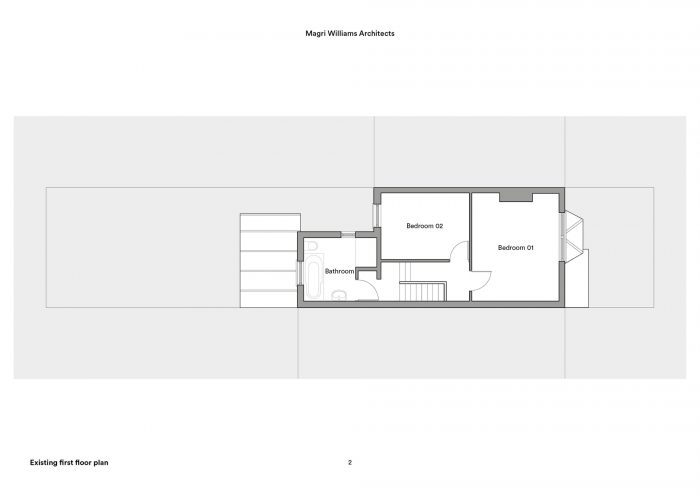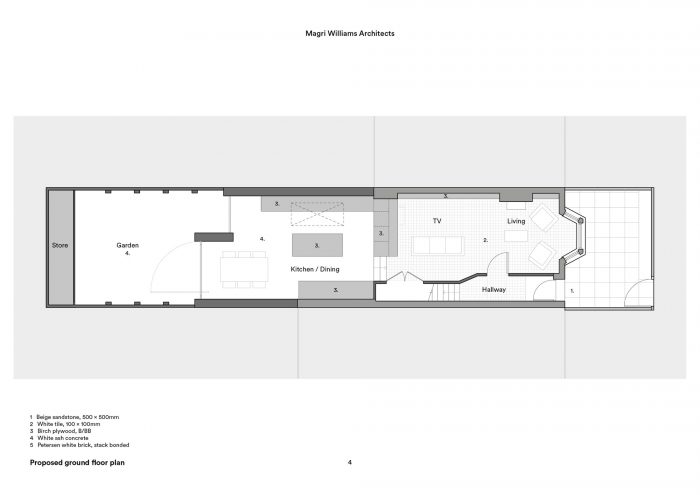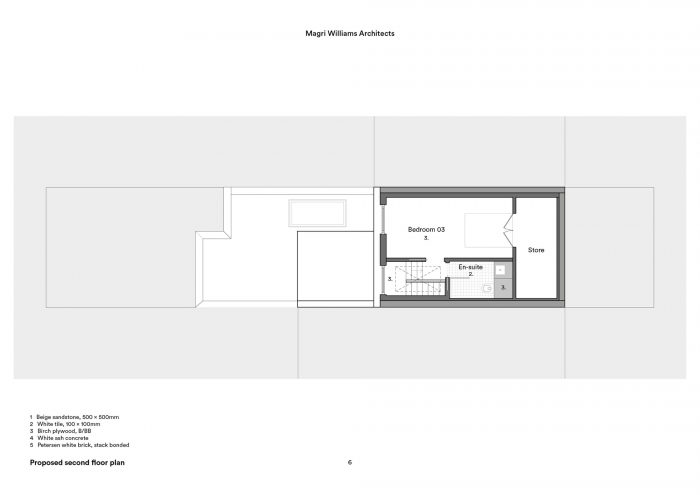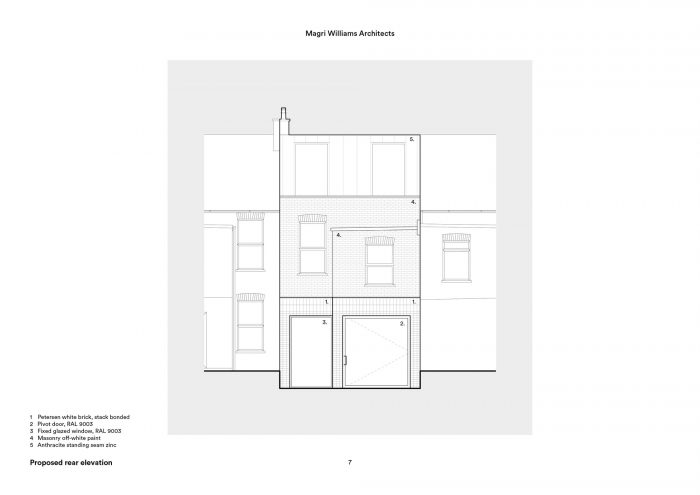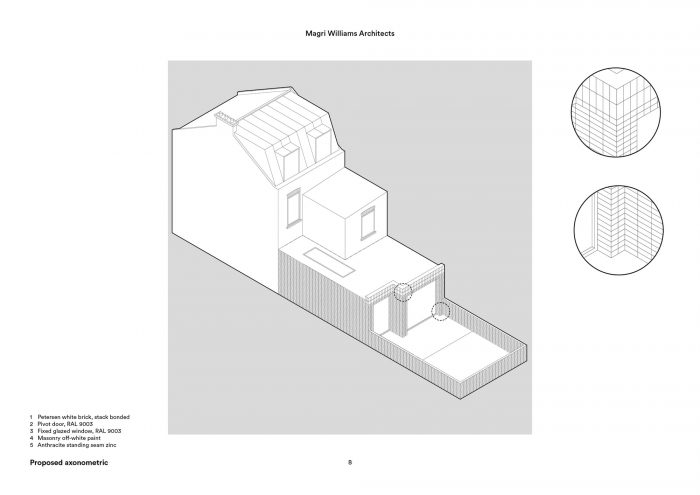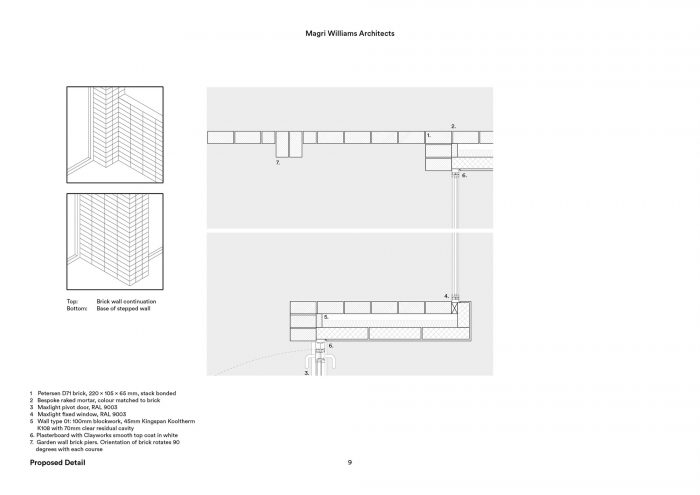该项目包括后部扩建、阁楼改建和完整的房屋翻修。在其基本形式上,客户的要求是扩大底层并提供一个额外的卧室。
The project comprises of a rear extension, loft conversion, and complete house refurbishment. In its basic form, the client’s brief was to enlarge the ground floor and provide an additional bedroom.
现有的排屋是伦敦砖砌的,后部有一个阶梯状的支腿。作为参考,新的底层扩建是错落有致的,延续了既定的节奏,在内部,界定了厨房和用餐区。在二楼,阁楼被改造为提供一个额外的带浴室的卧室。
The existing terrace house was a London stock brick with a rear outrigger that stepped in form. In reference, the new ground floor extension is staggered, continuing the established rhythm and internally, defining the kitchen and dining area. At the second floor, the loft was converted to provide an additional bedroom with en-suite.
在一楼,原来的走廊被恢复,以划分出入口大厅和起居室。虽然这减少了现有客厅的面积,但它培养了空间的家庭性,创造了一个更亲密的休息室。相比之下,底层的扩建提供了一个大型的开放式客厅、厨房和饭厅。一个水平变化和半高的胶合板墙划分了空间,保持了视觉上的联系,同时界定了不同的生活区域。一个新的胶合板楼梯将三层楼连接起来,上面有一个大的天窗,将光线引到房子里。
At the ground floor, the original hallway was reinstated to divide the entrance hall and living rooms. Whilst this reduced the size of the existing living room, it nurtured the domesticity of the space, creating a more intimate lounge. In contrast, the ground floor extension provides a large open plan living, kitchen and dining room. A level change and half height plywood joinery wall divides the space, maintaining a visual connection whilst defining different living areas. A new plywood staircase joins the three floors with a large skylight above that draws light through the house.
建筑师观点–关键特征
在罗斯林路,现有的排屋是一个维多利亚时代的房产,由伦敦股票砖制成。我们认为砖是现有的最重要的材料,是伦敦排屋的缩影。
Architects View – Key feature
At Roslyn Road, the existing terrace house was a Victorian property made from London Stock brick. We felt the brick was the most important material of the existing and epitomizes the London terrace.
把砖头带回它的基本形式,它有三个重复的面。我们希望在扩建部分表达这一点。因此,砖被铺设在相同的方向,以使每个面随着建筑的步骤而显现。端面在后立面中被表现出来;侧面在阶梯状中被表现出来;而顶面在墙头细节中被旋转。
Taking the brick back to its elemental form, it has three repeated faces. We wanted to express this in the extension. As such, the brick is laid in the same orientation to allow each face to be revealed as the building steps. The end face is expressed in the rear elevation; the side face in the stepped form; and the top face is rotated in the header detail.
在内部,对外部砖的色调进行了研究,以创造支持性材料的调色板。墙壁用浅色的粘土进行装饰。扩建部分的地板从灰白色的抛光混凝土过渡到现有门槛处的白色方砖,自然地排列成堆叠模式。瓷砖由多种色调组成,创造了变化和色调构成,呼应了后方砖块立面的自然变化。作为最后一种材料,胶合板被用于厨房、细木工制品和楼梯,以增加房屋的温暖和柔软度。
Internally, the tones of the external brick were examined to create the supporting material palette. The walls are finished with a light clay. The floor in the extension transitions from an ash white polished concrete to a white square tile at the existing threshold, naturally arranged in a stack pattern. The tiles consist of a palette of many shades, creating variation and tonal composition, echoing the natural variation in the rear brick elevation. As a last material, Plywood has been used in the kitchen, joinery, and staircase to add warmth and softness to the house.
Architects: Magri Williams Architects
Area : 145 m²
Year : 2018
Photographs :Nicolas Worley
Manufacturers : Clayworks, Domus Tiles, Maxlight, Petersen Tegl, Steyson
City: HARINGEY
Country:UNITED KINGDOM

